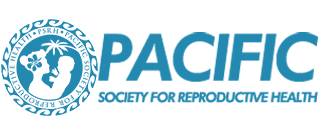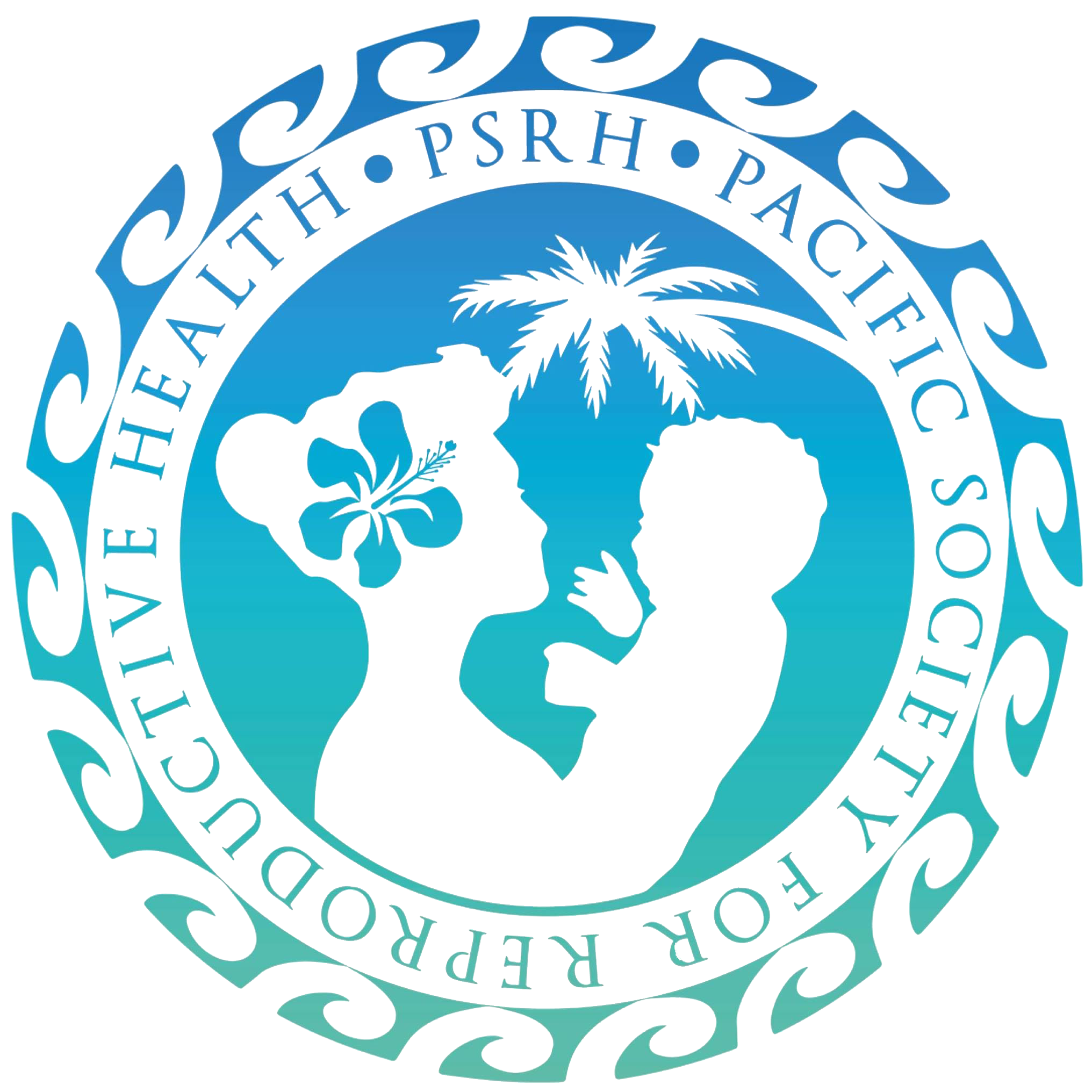Glen DL Mola,1 Pamela J Toliman,2 and Andrew J Vallely2,3
1School of Medicine and Health Sciences, University of Papua New Guinea, Port Moresby, Papua New Guinea.
2Papua New Guinea Institute of Medical Research, Goroka, Eastern Highlands Province, Papua New Guinea
3Kirby Institute, University of New South Wales (UNSW) Sydney, Australia
Cancer of the uterine cervix is one of the most common cancers to affect women globally. Estimates from the Global Burden of Cancer Collaboration Group reported that in 2013, there were 485,000 cases worldwide and 236,000 deaths resulting from cervical cancer.1-3 Low- and middle-income countries experience 85% of the global burden of cervical cancer. In Papua New Guinea (PNG) and other countries in the Pacific region, cervical cancer is the most common cancer among women4; in PNG alone, an estimated 1000-1500 women die every year from the disease.5
Cervical cancer is caused by a sexually transmitted infection with certain oncogenic types of human papillomavirus (HPV). When most people get an HPV infection they mount an immune response and eradicate the infection from their bodies within a few months. In some people however, the HPV infection is not cleared in this way and the infection persists.6 The precise reasons for this are unclear, but persistence appears more likely following infection with certain HPV types, among women who smoke, and among those living with HIV infection.7 Women who experience persistent infection with one or more oncogenic HPV type are at increased risk of developing cervical pre-cancer and cancer, typically many years or decades after they were first infected.7
The epidemiology of cervical cancer would suggest that it should be relatively straightforward to prevent infection and to screen for the disease. Nothing could be further from the truth. Over the past several decades Pacific countries have followed various strategies to try and reduce the burden of cervical cancer, and yet the disease remains the commonest women’s cancer in most settings.
The development of safe, highly-effective HPV vaccines has revolutionised primary prevention for cervical cancer and brought the elimination of cervical cancer as a public health priority within our reach.8 The benefits of protective vaccination have so far however been largely conferred in high-income settings: much more needs to be done to accelerate the introduction and roll-out of HPV vaccine in Papua New Guinea and other high-burden countries in the Pacific.9
Secondary prevention (or screening) is a more difficult issue. The first screening strategy developed was based on microscopic examination of a cells collected from the cervix and either smeared onto a glass slide (the Pap test) or suspended in a liquid preservative (liquid-based cytology). Specimen collection can only be carried out by a health worker and requires a vaginal speculum examination, which many women find uncomfortable and/or embarrassing. Following collection, specimens are sent away to a specialist laboratory for cytological examination and the results communicated back to the health worker at a later date. Women found to have high-grade lesions on cytology (or ‘cervical pre-cancer’) are then asked to return for colposcopy and biopsy, a procedure requiring considerable gynaecological expertise. Biopsy specimens are sent to a specialist laboratory for histological examination, the results of which then enable health staff to decide the best treatment plan for each woman. Screening programs using such multi-step strategies have been the basis of cervical cancer prevention programs in high-income countries for decades and contributed to the steady decline in deaths due to cervical cancer in these settings.10-12 However, the resource requirements of such programs are high and include the need for highly-trained clinical and laboratory personnel and substantial laboratory capacity. Additionally, the follow-up of women with positive cytology by colposcopy and biopsy requires considerable coordination and resources.
For these reasons, establishing and sustaining cytology-based screening programs in low-income settings has been extremely difficult.13,14 For example, in Papua New Guinea, a cervical screening initiative was established in 1999 by a non-governmental charity (the MeriPath program), and provided a service from more than 30 health facilities in 16 provinces.15 The program was able to achieve only modest coverage however, with around 45,000 women screened over ten years (2001-2011), representing less than 4% of the target population aged 20-59 years. Also, as specimens were sent to Australia for testing, more than half of those found to have high-grade disease were lost to follow-up and therefore did not receive treatment, due to the delay between testing and recall. As such it was concluded that this Pap test screening strategy was not an effective one for the prevention of cervical cancer in this setting.5
Similar experiences globally prompted the World Health Organization (WHO) to recommend alternative approaches to screening in low- and middle-income countries, and in particular, to advocate ‘screen and treat’ strategies based on same-day testing or clinical examination followed by ‘freezing treatment’ of the cervix (cryotherapy) for women who test positive.16 A WHO-endorsed ‘screen and treat’ approach that has been used extensively in low-income settings around the world is visual inspection of the cervix with acetic-acid (VIA) or Lugol’s iodine (VILI). This strategy involves the application of acetic acid or Lugol’s iodine to the cervix and observing aceto-white staining (VIA) or areas where iodine has not been taken up (VILI), that are said to indicate underlying tissue abnormality. Favourable performance characteristics for the detection of histologically-diagnosed cervical ‘pre-cancer’ (cervical intraepithelial neoplasia (CIN) grade 2 or worse) in research settings17 has led to VIA being advocated as an accurate, low-cost screening strategy, and to its implementation in several low-income settings including Bangladesh, Tanzania and Thailand.18-20 Many countries have however experienced difficulties scaling up VIA while maintaining adequate quality, and have reported much lower sensitivity for the detection of cervical pre-cancer compared to research settings.17-22
In PNG, many of us held out high hopes that this approach would be more successful compared to the earlier Pap test program because it should not be necessary to locate the woman again, as the whole process could be concluded on one day. Pilot testing of VIA in two provincial sites has been disappointing for a number of reasons. First of all the finding that VIA positivity is not associated with HPV infection,23 or with underlying cervical pre-cancer.24 We have also found cervical cryotherapy cumbersome and time-consuming to administer in the clinic; and logistically challenging to sustain due to the need for a continuous supply of carbon dioxide (in our setting, obtained in cylinders transported considerable distances by road from the supplier).
In the last decade, the effectiveness of HPV testing for the detection of cervical pre-cancer and cancer has been demonstrated in large-scale studies,25,26 leading to the introduction of HPV testing for primary cervical screening in many high-income countries. The WHO recently recommended that HPV testing also be integrated into cervical screening programs in low-income settings, and that countries evaluate how best such testing strategies might be introduced and scaled-up.16 In PNG, we are currently evaluating a ‘test and treat’ strategy based on point-of-care HPV testing (using the GeneXpert HPV Test: http://www.cepheid.com/en/cepheid-solutions/clinical-ivd-tests/sexual-health/xpert-hpv) plus same-day treatment using a battery-powered heat probe (the WISAP C3 thermo-coagulator: https://www.thermo-coagulation.com/c3-mobile-coagulator/). The thermo-coagulator is optimised for low-resource settings and can be operated off a standard mains electricity power or via a small battery pack (invaluable for outreach screening activities). Other features of the WISAP C3 thermo-coagulator include a built-in LED examination light, a retractable heat protection safety guard, and a simple easy-to-use handling mechanism for accurate and safe treatment.
We have found that HPV test results using self-collected vaginal specimens (i.e. those collected by women themselves) are as good as test results using clinician-collected cervical specimens.27 We have also found that testing self-collected specimens for HPV infection can be used to identify women with underlying cervical pre-cancer:28 around 92% of women with high-grade disease can be detected and treated if screened by HPV testing alone, compared with less than 50% when screening is based on VIA examination alone (Table 1). This means that HPV testing alone is far more sensitive for detecting women with cervical pre-cancer than VIA examination alone. Only 8% of all women with disease were ‘missed’ (i.e. were not offered treatment) when HPV testing alone was used for screening, compared with 53% of women being missed when VIA examination alone was used to screen. Furthermore, using HPV testing alone to screen resulted in less women being over-treated (13%) compared to VIA examination alone (17%).
Using self-collected specimens means that only those who test HPV positive (around 10-15% of all those screened) require a pelvic examination. This means that experienced clinical staff can focus their time on providing counselling and treatment for those most at risk of disease. The use of a highly-portable, easy-to-use, battery-powered treatment device that requires 40 – 60 seconds treatment time per patient compared to around 10 minutes treatment time per patient with cryotherapy, has greatly reduced logistical and operational constraints in the clinic, and is also proving highly-acceptable to women. We are now working with colleagues in other Asia-Pacific countries to evaluate our point-of-care ‘test and treat’ approach in other high-burden settings in our region.
We recommend that health policy makers and political decision makers in the Pacific take note of these findings and allocate sufficient funds for HPV vaccination programs to prevent cervical cancer in the next generation, and for HPV testing and pre-cancer treatment in this generation, so that the scourge of cervical cancer can be reduced and eventually eliminated from our communities.
Table 1: HPV testing compared with VIA examination for the detection and treatment of underlying high-grade disease (cervical pre-cancer)
| |
Women with high-grade disease who were treated appropriately |
Women with high-grade disease who were not treated (‘missed’) |
Women without disease who were treated
(‘over-treated’) |
| HPV testing alone |
92% (33/36) |
8% (3/36) |
13% (64/491) |
| VIA examination alone |
47% (17/36) |
53% (19/36) |
17% (80/491) |
References
- Fitzmaurice C, Dicker D, Pain A, et al. The Global Burden of Cancer 2013. JAMA Oncol 2015; 1(4): 505-27.
- LaVigne AW, Triedman SA, Randall TC, Trimble EL, Viswanathan AN. Cervical cancer in low and middle income countries: Addressing barriers to radiotherapy delivery. Gynecologic Oncology Reports 2017; 22: 16-20.
- Forman D, de Martel C, Lacey CJ, et al. Global burden of human papillomavirus and related diseases. Vaccine 2012; 30 Suppl 5: F12-23.
- Garland SM, Brotherton JM, Skinner SR, et al. Human papillomavirus and cervical cancer in Australasia and Oceania: risk-factors, epidemiology and prevention. Vaccine 2008; 26 Suppl 12: M80-8.
- Vallely A, Mola GD, Kaldor JM. Achieving control of cervical cancer in Papua New Guinea: what are the research and program priorities? P N G Med J 2011; 54(3-4): 83-90.
- Munoz N, Hernandez-Suarez G, Mendez F, et al. Persistence of HPV infection and risk of high-grade cervical intraepithelial neoplasia in a cohort of Colombian women. British journal of cancer 2009; 100(7): 1184-90.
- de Sanjose S, Brotons M, Pavon MA. The natural history of human papillomavirus infection. Best practice & research Clinical obstetrics & gynaecology 2018; 47: 2-13.
- Aranda S, Berkley S, Cowal S, et al. Ending cervical cancer: A call to action. International journal of gynaecology and obstetrics: the official organ of the International Federation of Gynaecology and Obstetrics 2017; 138 Suppl 1: 4-6.
- Tsu VD, Ginsburg O. The investment case for cervical cancer elimination. International journal of gynaecology and obstetrics: the official organ of the International Federation of Gynaecology and Obstetrics 2017; 138 Suppl 1: 69-73.
- Nanda K, McCrory DC, Myers ER, et al. Accuracy of the Papanicolaou test in screening for and follow-up of cervical cytologic abnormalities: a systematic review. Annals of internal medicine 2000; 132(10): 810-9.
- Qiao YL, Jeronimo J, Zhao FH, et al. Lower cost strategies for triage of human papillomavirus DNA-positive women. International journal of cancer 2014; 134(12): 2891-901.
- Landy R, Pesola F, Castañón A, Sasieni P. Impact of cervical screening on cervical cancer mortality: estimation using stage-specific results from a nested case–control study. British Journal of Cancer 2016; 115(9): 1140-6.
- Catarino R, Petignat P, Dongui G, Vassilakos P. Cervical cancer screening in developing countries at a crossroad: Emerging technologies and policy choices. World journal of clinical oncology 2015; 6(6): 281-90.
- Holme F, Kapambwe S, Nessa A, Basu P, Murillo R, Jeronimo J. Scaling up proven innovative cervical cancer screening strategies: Challenges and opportunities in implementation at the population level in low- and lower-middle-income countries. International journal of gynaecology and obstetrics: the official organ of the International Federation of Gynaecology and Obstetrics 2017; 138 Suppl 1: 63-8.
- Goyen J. Cervical screening in Papua New Guinea: 10 years experience of the MeriPath program. 47th Annual Symposium of the Medical Society of Papua New Guinea. Kimbe, West New Britain; 2011.
- World Health Organization. WHO Guidelines for screening and treatment of precancerous lesions for cervical cancer prevention. Geneva: World Health Organization Press; 2013.
- Sauvaget C, Fayette JM, Muwonge R, Wesley R, Sankaranarayanan R. Accuracy of visual inspection with acetic acid for cervical cancer screening. International journal of gynaecology and obstetrics: the official organ of the International Federation of Gynaecology and Obstetrics 2011; 113(1): 14-24.
- Basu P, Nessa A, Majid M, Rahman JN, Ahmed T. Evaluation of the National Cervical Cancer Screening Programme of Bangladesh and the formulation of quality assurance guidelines. J Fam Plann Reprod Health Care 2010; 36(3): 131-4.
- Ngoma T, Muwonge R, Mwaiselage J, Kawegere J, Bukori P, Sankaranarayanan R. Evaluation of cervical visual inspection screening in Dar es Salaam, Tanzania. International journal of gynaecology and obstetrics: the official organ of the International Federation of Gynaecology and Obstetrics 2010; 109(2): 100-4.
- Chumworathayi B, Blumenthal PD, Limpaphayom KK, Kamsa-Ard S, Wongsena M, Supaatakorn P. Effect of single-visit VIA and cryotherapy cervical cancer prevention program in Roi Et, Thailand: a preliminary report. The journal of obstetrics and gynaecology research 2010; 36(1): 79-85.
- Basu P, Mittal S, Banerjee D, et al. Diagnostic accuracy of VIA and HPV detection as primary and sequential screening tests in a cervical cancer screening demonstration project in India. International journal of cancer 2015; 137(4): 859-67.
- Fokom-Domgue J, Combescure C, Fokom-Defo V, et al. Performance of alternative strategies for primary cervical cancer screening in sub-Saharan Africa: systematic review and meta-analysis of diagnostic test accuracy studies. BMJ (Clinical research ed) 2015; 351: h3084.
- Vallely AJ, Toliman PJ, Ryan C, et al. Association between visual inspection of the cervix with acetic acid examination and high-risk human papillomavirus infection, Chlamydia trachomatis, Neisseria gonorrhoeae and Trichomonas vaginalis in Papua New Guinea. The Australian & N Z journal of obstetrics & gynaecology 2018.
- Toliman P, Kaldor J, Badman SG, et al. Point-of-care Xpert HPV Test outperforms visual inspection with acetic acid, and a combination HPV/VIA algorithm, for the detection of high-grade cervical disease in Papua New Guinea. Australiasian Tropical Health Conference. Cairns, Australia: Australiasian Institute of Tropical Health and Medicine; 2017.
- Dillner J, Rebolj M, Birembaut P, et al. Long term predictive values of cytology and human papillomavirus testing in cervical cancer screening: joint European cohort study. BMJ (Clinical research ed) 2008; 337: a1754.
- Patanwala IY, Bauer HM, Miyamoto J, Park IU, Huchko MJ, Smith-McCune KK. A systematic review of randomized trials assessing human papillomavirus testing in cervical cancer screening. American journal of obstetrics and gynecology 2013; 208(5): 343-53.
- Toliman P, Badman SG, Gabuzzi J, et al. Field Evaluation of Xpert HPV Point-of-Care Test for Detection of Human Papillomavirus Infection by Use of Self-Collected Vaginal and Clinician-Collected Cervical Specimens. Journal of clinical microbiology 2016; 54(7): 1734-7.
- Toliman P, Kaldor J, Badman S, et al. Evaluation of self-collected vaginal specimens for the detection of high-risk HPV infection and the prediction of high-grade cervical intraepithelial lesions in a high-burden, low-resource setting. Clin Micrbiol Infect 2018: In press.





